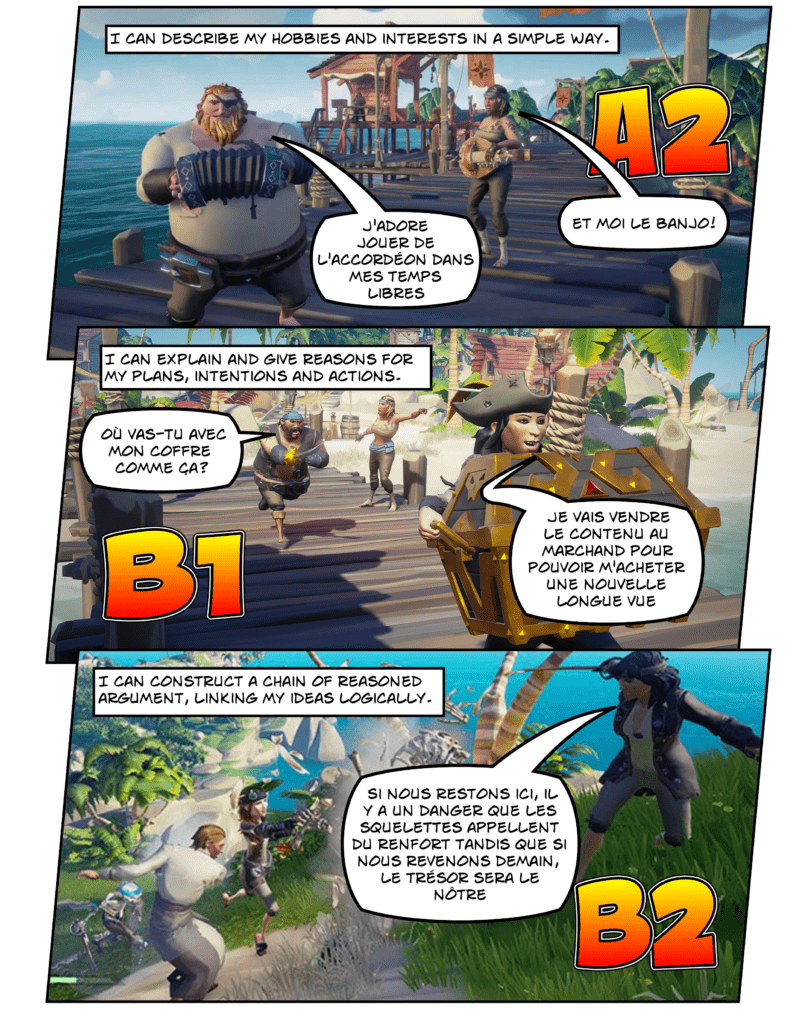The conversational French gaming sessions I teach fall into 3 proficiency levels based on the CEFR, here are some of the descriptors for each level for listening and speaking. Students are placed in a level after I have assessed them during their first free 30-minute session.

A2
Listening: Students can understand
Spoken Interaction: At A2 level, students can communicate in simple and routine tasks requiring a simple and direct exchange of information on familiar topics and activities. They can handle very short social exchanges, even though they cannot usually keep the conversation going of their own accord.
B1
Listening: Students are able to understand the main points of clear standard speech on familiar matters regularly encountered in work, school, leisure, etc. They can understand the main point of many radio or TV programmes on current affairs or topics of personal or professional interest when the delivery is relatively slow and clear.
Spoken interaction: Students at this level can exploit a wide range of simple language to deal with most situations likely to arise whilst
B2
Listening: Students can understand standard speech spoken at a normal rate and follow even complex lines of argument provided the topic is reasonably familiar. They can understand the essentials of lectures and most TV news and current affairs programmes and can understand the majority of films in standard dialect.
Spoken interaction: Students can interact with a degree of fluency and spontaneity that makes regular interaction with native speakers quite possible. They are able to take an active part in
